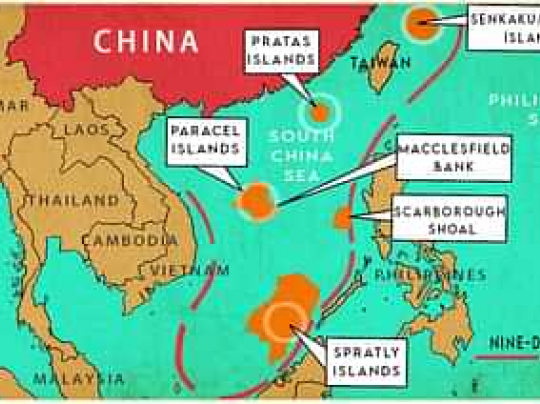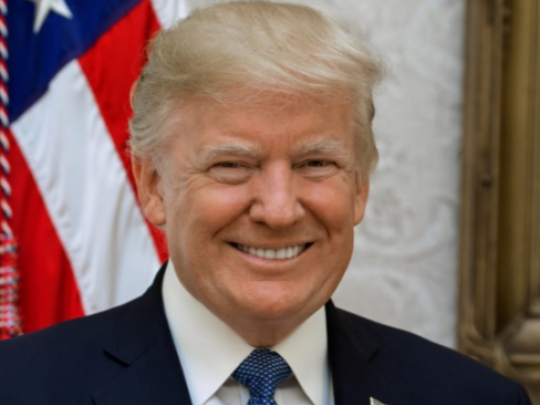How China Is Using Lawfare To Expand Its Territory

It should really come as no surprise to anyone that China is using lawfare to expand it’s own territory. While doing so, they are also hoping to circumnavigate valid criticism against their nine-dash line policy.
A closer examination of the idea of ‘four sha’ in the South China Sea, will reveal that China is waging the same old lawfare.
Saifuddin Abdullah, Malaysian foreign minister, recently claimed that China is shifting its legal theory from ‘nine-dash line’ to ‘four sha’ in the disputed waters. Abdullah told reporters that China “speaks less of the ‘nine-dash line’ and more often of the ‘four sha’”.
According to the ‘nine-dash line’ theory, China uses nine demarcating boundaries to represent the maximum extent of its historical claim on the South China Sea.
Some media reports following the Malaysian foreign minister’s remarks have suggested that China might be taking a step back from its nine-dash-line claim.
“I haven’t seen his remarks. China’s position on the South China Sea issue is consistent and clear, and there has been no change,” said Chinese foreign ministry spokesperson, Zhao Lijian, in response to a question about the switch in legal theory.
The idea of ‘four sha’ isn’t new and is directly linked to China’s so-called nine-dash line claim.
‘Four Sha’ or ‘four sands’ is linked to Nanhai Zhudao, a Chinese term used for the South China Sea. As per the Chinese point of view, Nanhai Zhuhao has historically been its territory marked by four islands: Dongsha Qundao, Xisha Qundao, Zhongsha Qundao, and Nansha Qundao. These islands are also known as Pratas Islands, Paracel Islands, the Macclesfield Bank area, and Spratly Islands.
Using law to realise objective
China continues taking the lawfare approach to territorial disputes like the South China Sea, using the ‘four sha’ idea.
Lawfare is the use of legal regimes to achieve an outcome in a dispute without using military coercion. Lawfare in the context of South China Sea can be defined as “leveraging of existing legal regimes and processes to constrain adversary behaviour, contest disadvantageous circumstances, confuse legal precedent, and maximum advantage in situation related to PRC’s core interests”
All legal matters related to seas and oceans around the world is governed by the UNCLOS (United Nations Convention on the Law of the Sea). China has signed the convention in 1982 and ratified it in 1996, but has not acted in line with the agreement.
Historical claim?
The theory of ‘Four-Sha’ was first socialised in diplomatic circles in 2017 by deputy director-general of the Chinese foreign ministry’s department of treaty and law, Ma Xinmin. During a diplomatic meeting in Boston, Ma told US officials that China’s historical waters and the 200-mile Exclusive Economic Zone (EEZ) are part of its sovereign territory.
“Pursuant to this, China’s rights to the EEZ and continental shelf of its ‘four sha’ Islands do not prejudice the continuing viability of historic rights that China enjoys under customary international law,” wrote Ma Xinmin in the Chinese Journal of Global Governance in 2019.
In April 2020, the Chinese Ministry of Civil Affairs’ website published names of “25 islands and reefs and 55 seafloor geographical entities”. This action resembles the recent renaming of locations by the Chinese inside Arunachal Pradesh – a lawfare strategy.
The US State Department published a first of its kind study titled ‘Limits of the Sea’, on 12 January, examining China’s historical claim in relation to its claim on the archipelagos under Article 7 of UNCLOS.
“The PRC asserts that it has ‘historic rights’ in the South China Sea. This claim has no legal basis and is asserted by the PRC without specificity as to the nature or geographic extent of the ‘historic rights’ claimed,” said the US State Department study.
Experts believe China’s new legal strategy will not help achieve much in the dispute.
“China’s Four Sha theory was not directly considered by the tribunal ruling, although it would also be difficult to support,” said legal affairs expert Julian Ku.
Not a rumour
The US Navy Carrier Strike Groups Carl Vinson and Abraham Lincoln entered the South China Sea on Sunday, following China’s militarisation of Paracel Islands, Spratly Islands and other islands. According to the USNI, USS Benfold carried out a freedom of navigation operation close to the Paracel Islands and challenged China’s claim on the islands. A massive US presence can be seen in the South China Sea right now.
The deployment of US carriers comes after China’s aircraft carriers Shandong and Liaoning carried out back to back military exercises in the South China Sea.
Chinese experts have claimed the use of ‘four sha’ is a rumour created by some ‘forces’.
“Some forces now are hyping the term ‘four sha’ but this is obviously a newly created rumour to deliberately confuse the SCS issue. The Chinese government and scholars who have studied the SCS have never proposed or used the concept of ‘Four Sha,’ and China’s claims in the SCS have never changed,” wrote Chen Xiangmiao, director of the World Navy Research Center at the National Institute for South China Sea Studies.
With the ‘four sha,’ China is attempting to both broaden its position and deflect criticism of its nine-dash line strategy.
It is attempting to utilise the lawfare approach to replicate the wording of the UNCLOS and broaden its claim to characteristics far beyond four islands it has already taken possession of with the ‘four sha’ claim.
- Source : GreatGameIndia


















